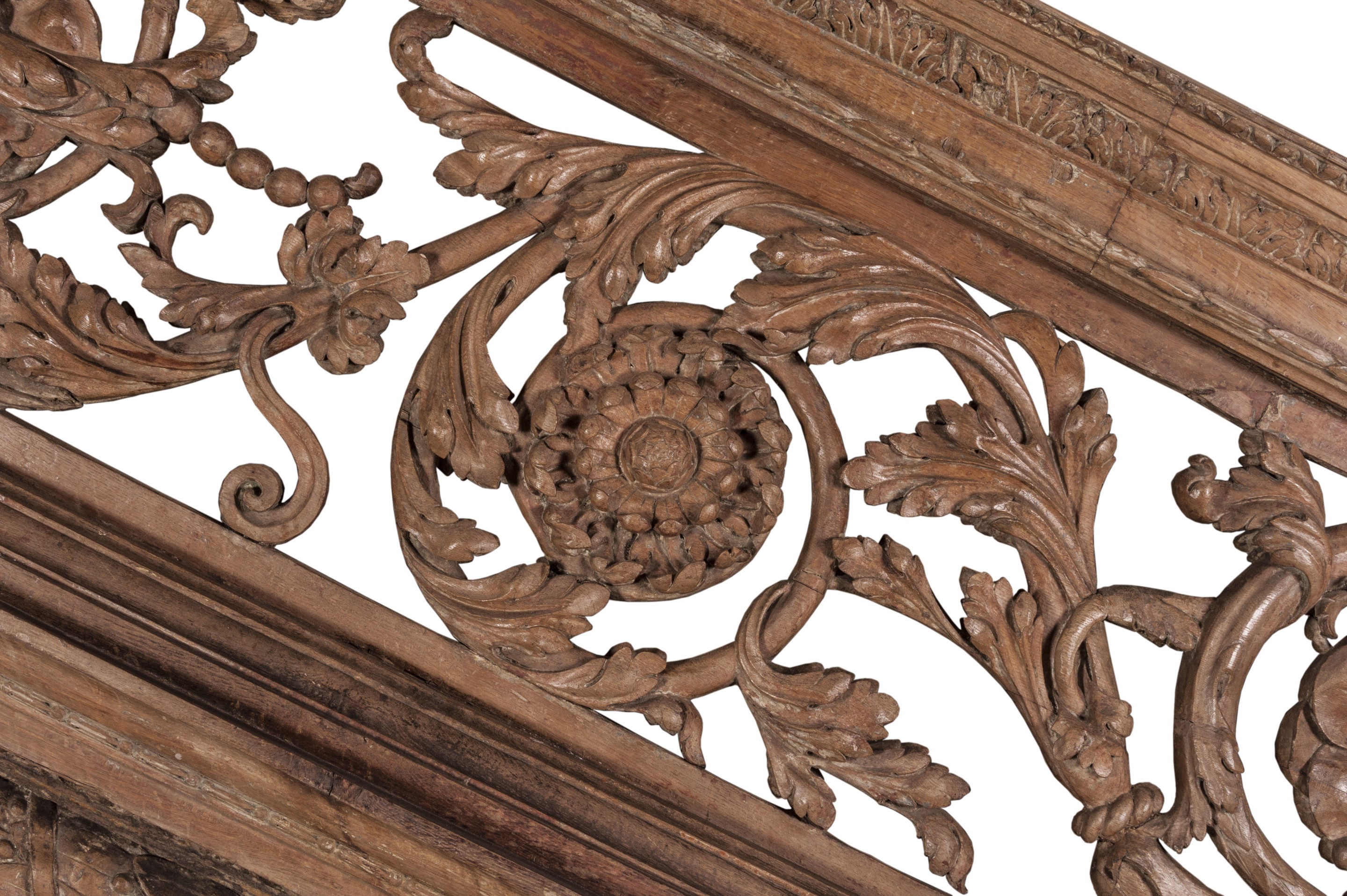17th Century Carved Oak Staircase
17th Century Carved Oak Staircase
Circa 1660
Stock Number: 11471/MD
Crakemarsh Hall, Staffordshire, England
Price on application
This will probably be the last ever opportunity to acquire a 17th century, circa 1660, carved oak staircase. The only other examples are either in situ in country houses – never to be removed – or in the Metropolitan Museum of Art, New York; being the Cassiobury Park Staircase.
The stair consists of three extravagantly carved oak rising rails and a single return gallery, carved in the manner of Edward Pearce (circa 1630–1698). With lavish open panels set between large square newels decorated with fruit, the elaborate carving in the balustrades takes the form of scrolls of acanthus foliage around central flowers, possibly sunflowers; snakes and a peacock are in evidence, with more acanthus leaf carving to the handrail string. The newel posts having carved panels incorporating a drop of fruit and foliage suspended from a bow.
Rescued from Crakemarsh Hall, Staffordshire, England, the stair was listed in the 1968 sales particulars for the Hall and Estate ‘as almost certainly the work of Grinling Gibbons’, although it is suggested that this stair is a copy of the Great Stair at Sudbury Hall by Edward Pearce.
Dendrochronology
Tree-ring analysis of timbers from samples obtained from the newel posts has resulted in the production of a single dated site chronology. This site chronology, comprising four samples, is 130 rings long, these rings date the years spanning 1446-1575. From further analysis, it is possible to conclude that the timbers are unlikely to have been felled before 1596, giving little reason to doubt that the stair dates from the mid- to late-seventeenth century.
It is worth noting that the main stair at Tredegar House has recently been dated by dendrochronology, giving felling dates from 1666–1672, and though there are subtle differences, the Tredegar stair is remarkably similar to that of this staircase.
The stair consists of three extravagantly carved oak rising rails and a single return gallery, carved in the manner of Edward Pearce (circa 1630–1698). With lavish open panels set between large square newels decorated with fruit, the elaborate carving in the balustrades takes the form of scrolls of acanthus foliage around central flowers, possibly sunflowers; snakes and a peacock are in evidence, with more acanthus leaf carving to the handrail string. The newel posts having carved panels incorporating a drop of fruit and foliage suspended from a bow.
Rescued from Crakemarsh Hall, Staffordshire, England, the stair was listed in the 1968 sales particulars for the Hall and Estate ‘as almost certainly the work of Grinling Gibbons’, although it is suggested that this stair is a copy of the Great Stair at Sudbury Hall by Edward Pearce.
Dendrochronology
Tree-ring analysis of timbers from samples obtained from the newel posts has resulted in the production of a single dated site chronology. This site chronology, comprising four samples, is 130 rings long, these rings date the years spanning 1446-1575. From further analysis, it is possible to conclude that the timbers are unlikely to have been felled before 1596, giving little reason to doubt that the stair dates from the mid- to late-seventeenth century.
It is worth noting that the main stair at Tredegar House has recently been dated by dendrochronology, giving felling dates from 1666–1672, and though there are subtle differences, the Tredegar stair is remarkably similar to that of this staircase.




































